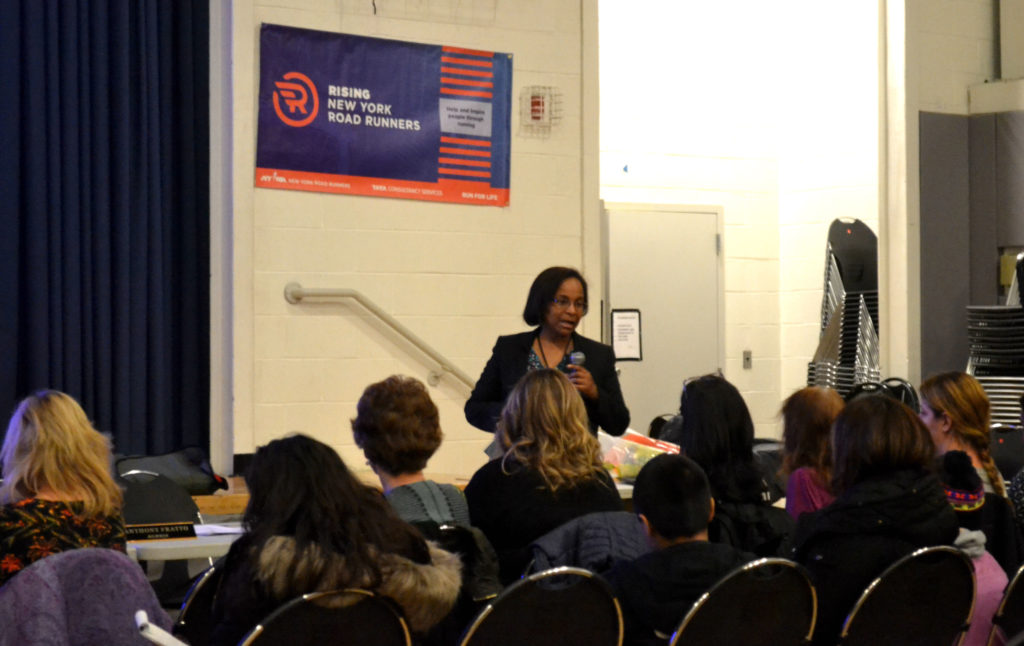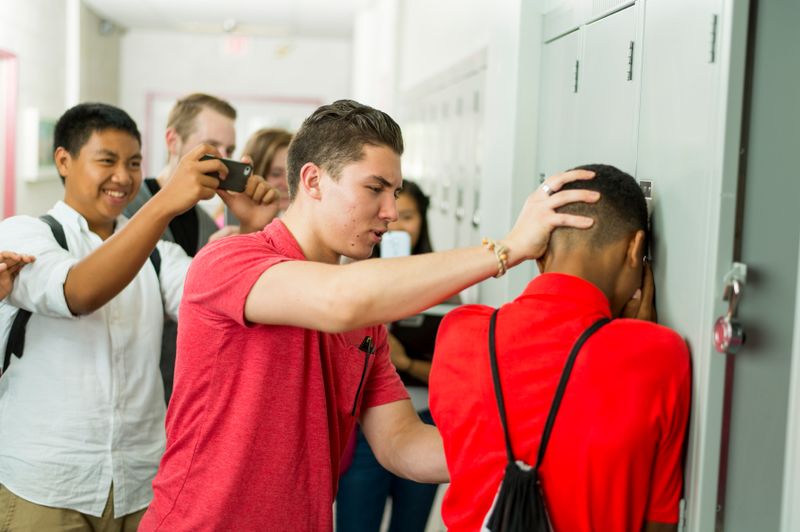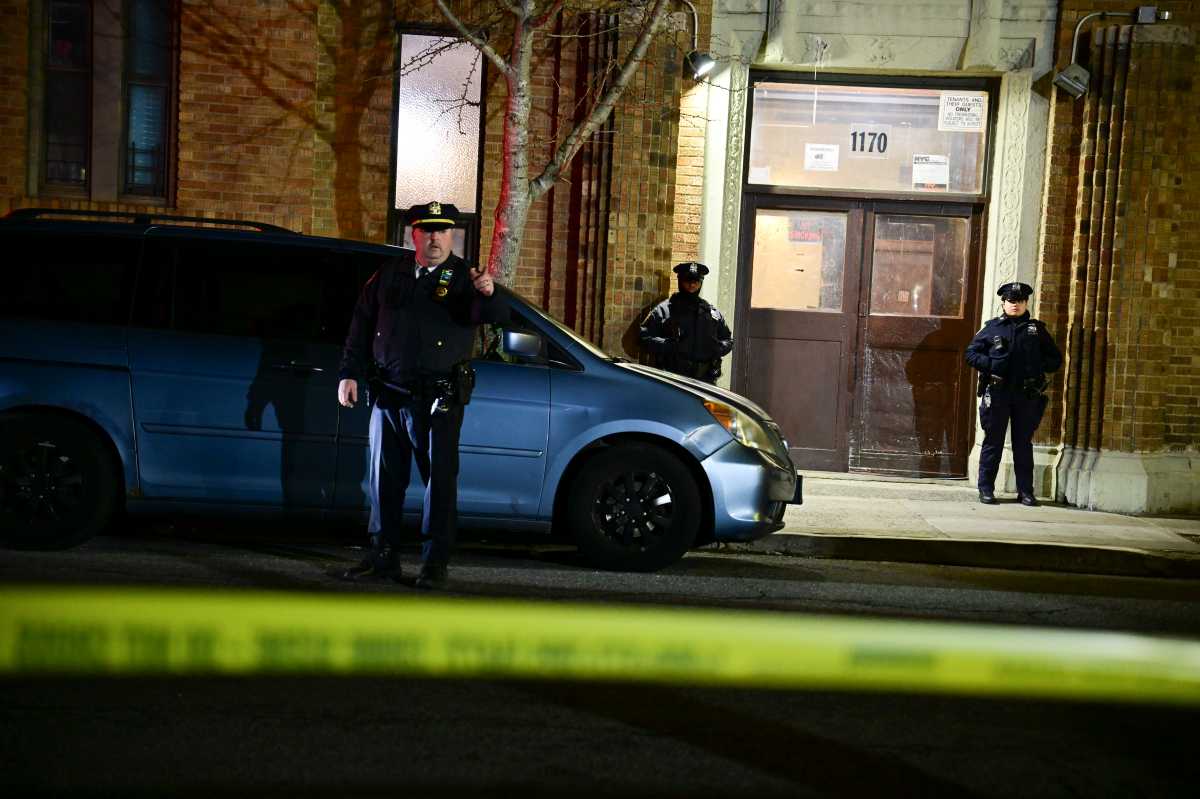City officials spoke to parents in Middle Village and gave some startling statistics on suicide, bullying and depression this week.
Gillian Smith and Donna Brailsford, crisis/de-escalation managers for the Department of Education (DOE), addressed the crowd at P.S. 49 during the District 24 Community Education Council meeting on Nov. 28.
Brailsford told attendees that children and young adults aged 15-24 were traditionally looked at as the “largest risk population” for suicide. But more recently, younger children have been found to be at greater risk of taking their own lives.
“We’re now realizing that between the ages of 10 and 14, the numbers have skyrocketed with children attempting to take their lives,” Brailsford said. “Children as young as 4 and 5 years old have been known to express thoughts of wanting to die.”
The DOE official also pointed out that children who later complete suicide attempts showed signs in early school age.

There are different risk factors associated with suicide in children and young adults, Brailsford said. While males are more likely to complete suicide, females attempt suicide more than males. Further, the number of female young people completing suicide has increased recently, particularly among Hispanic girls.
“Kids worry about the exact same things adults worry about, in addition to their childhood stuff,” Brailsford said. “‘Am I accepted? Am I cool enough? How will I be seen?'”
When a young person expresses that they’re not feeling right, the expert continued, the most important thing to do is listen. Changes in behavior are the biggest indicators that a child may be depressed or considering suicide. For example, if a child is suddenly sleeping more than usual or not sleeping at all, this may be an indicator. A sudden disinterest in something he or she enjoyed may also be an indicator.
And while suicide is the second leading cause of death in young people, Brailsford said, it is important to take measures “not to normalize” the act.
“We don’t want to make it seem like every child is attempting suicide,” she said. “But it is an epidemic.”
It is also important to note that depression in young people “comes and goes,” she continued. Children may not appear depressed all the time, but it is important to be there for them through every stage.
“The best antidote is being there for your kids,” the DOE official said.
Brailsford encouraged concerned parents to approach their child’s pediatrician, who may suggest a referral, and school counselor and crisis team. Resources are also available through the city’s ThriveNYC program.
With regards to bullying, if a parent feels that their child is being bullied, the same approach applies. Children who are suffering from depression or suicidal thoughts are also more likely to be a target of bullying, the official said.
“The disconnection makes them more of a target because they are easier to get upset,” she said.
Identifying the difference between conflict and bullying may make the reporting process easier for parents, Brailsford said. Bullying is repeated and intentional acts of meanness that cause harm to the target. The target is the one who leaves the incident upset. With conflict, both individuals are generally upset after the event. Bullying and conflict are handled by officials in different way.
If bullying is suspected, parents are encouraged to document each incident. Parents unsatisfied with a school’s response to bullying incidents may call 311 and their school superintendent’s office.
“There is a myriad of people to talk to in District 24,” Superintendent Madelene Taub-Chan said. “Principals, guidance counselor, assistant principals, deans and a whole district office is there for you.”
































